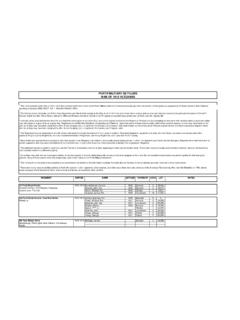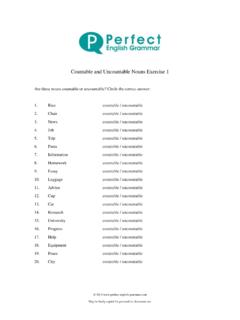Transcription of BAYONETS M1 GARAND - Popernack
1 25 GCA Journal Fall 2009 During the M1 GARAND s long service life, a wide variety of bay-onets were issued. A martial arms collector could limit his or hercollection to just the many manufacturing variants and still havedozens of examples. What follows is a brief survey of the mostrepresentative types of BAYONETS and scabbards used with the M1905 BayonetWhen the GARAND was adopted as our new infantry rifle in 1936,the standard bayonet was the M1905. It was originally designedfor the M1903 rifle and was produced by Springfield Armory andRock Island Arsenal from 1906 to 1922. The M1905 bayonet hada blued handle and a 16 bright, bare metal blade until in 1918, the M1905 was completely blued, and was latercompletely Parkerized from 1918 until the end of grips were black walnut. Many early M1905 s were rebuiltand refinished after WWI. According to the War Department s1933 Mobilization Plan, 581,000 M1905 BAYONETS were stored inserviceable condition.
2 Given the small size of the Depression eramilitary, these were adequate for the first few years of theGarand s service. By early 1939, war clouds were gathering over Europe, and theWar Department devised a Protective Mobilization Plan. Thestockpile of leftover WWI era BAYONETS was to be supplementedwith perhaps 100,000 to 300,000 new production BAYONETS , andcontracts were being negotiated by late 1941. The Decemberattack on Pearl Harbor showed how fortuitous that planning new, second production period M1905 bayonet is sometimeserroneously called the M1942 bayonet by collectors. It has a16 Parkerized blade similar to the 1918-1922 production bayo-nets. Instead of walnut, the grips are usually black or sometimesbrown plastic. Six civilian firms produced 1,540,578 M1905 bay-onets from April 1942 to May 1943:Wilde Drop Forge & Tool (WT)Utica Cutlery (UC)Union Fork & Hoe (UFH)Pal Blade & Tool (PAL)Oneida (OL)American Fork & Hoe (AFH)Scabbards for the M1905 BayonetWhen the GARAND was adopted, the standard scabbard was theM1910.
3 It was made of wood covered with canvas and had aleather tip. The 1933 Plan lists only 180,660 of these scabbardsin serviceable condition. To help make up for the shortfall, theWar Department listed the M1917 and M1905 Modified scab-bards as substitute standard. The M1917 was originally designed for the M1917 bayonet usedon the M1917 rifle and various trench shotguns. It was alsofound to be suitable for the M1905 bayonet and was consideredan acceptable substitute if a M1910 scabbard was not 1933 Plan lists 1,691,048 M1917 s on hand, but deteriora-tion of the leather bodies made many unserviceable. Before 1910, the M1905 bayonet was issued with the M1905scabbard. It had a wood body covered with leather and a hangerdesigned to fit the M1903 cartridge belt. When the M1910 car-tridge belt was adopted, many M1905 scabbards were convertedwith a new style belt hanger and were re-designated M1905 Modified.
4 The 1933 plan lists 6,848 M1905 and 99,030 M1905 Modified scabbards available. Like the M1917 scabbards, manywere unserviceable due to leather deterioration. M1 GARANDBy Mike PopernackBAYONETS26 Fall 2009 GCA Journal When the second production period for M1905 BAYONETS began, anew M3 scabbard was introduced to replace the complex andfragile earlier types. It had a resin-impregnated, cotton duck fab-ric body painted green and had a metal throat. Two contractors, beckwith Manufacturing and Detroit Gasket & Manufacturingproduced 3,030,223 M3 scabbards between January 1942 andFebruary M3 was the most widely issued scabbard for the M1905 bayo-net during WWII, but period photographs show the M1910 scab-bards continued to see service throughout the war. Even the substi-tute standard scabbards like the M1917 were widely used in state-side training and early combat in the Pacific and North BayonetIn order to produce a more practical weapon and conserve steel, anew bayonet was adopted in 1943.
5 The M1 bayonet was basicallya shorter M1905 with a 10 rather than 16 blade. Five of theoriginal six civilian manufacturers producing M1905 bayonetsconverted to M1 bayonet production. Wilde Drop Forge & ToolCo. discontinued its production. From April 1943 through August1945, some 2,948,649 M1 BAYONETS were produced. M1905 (Top) M1905 Modified (Center) M1917 (Bottom).1942 Production M1905 with M3 scabbard markings: beckwith Mfg, (Left) Detroit Gasket (Right). beckwith scabbard bayonet with M7 Journal Fall 2009 The M7 scabbard, essentially a shorter version of the M3, wasadopted for the M1 bayonet. beckwith Manufacturing Co. pro-duced 2,112,672 from April 1943 to August 1945. Detroit Gasket& Mfg. Co. did not produce M7 Bayonet (Converted)With the decision to adopt the M1 bayonet, Ordnance developeda program to convert the older 16 M1905 BAYONETS to the new10 standard.
6 Springfield Armory and the five civilian manufac-turers converted M1905 BAYONETS returned from stateside andoverseas units. The 16 blades were cut down and the pointsreground. The point was usually a spear style like the originalbayonet, but a knife style was occasionally used. The knifepoint was an attempt to compensate for the thin, fragile steel leftin the deep, square fuller of early production M1905 cut down BAYONETS were marked by the company that didthe modification, and no special effort was made to segregate thebayonets by original manufacturer. Any manufacturer s M1905bayonet, including Rock Island or Springfield, could be convertedby any other manufacturer. Frequently, the company doing themodification marked the bayonet. A total of 1,007,671 M1905bayonets were converted to M1 s during WWII. Ordnance madeno distinction in basis of issue or nomenclature between an origi-nal production M1 bayonet and one converted from a M1905.
7 Converted point types: knife (top), spear (center), original M1 (right).Typical makers mark on M1 Utica M1905 converted to M1 by AFH M1905 converted to M1 by 2009 GCA JournalM7 Scabbard (Converted)Similar to the conversion of M1905 to M1 BAYONETS , there was awartime program to shorten M3 scabbards to M7 length. Thescabbards were disassembled, the body shortened and the metalthroat reattached. These converted scabbards can be identified bythe different style of crimp attachment where the body joins thethroat. There were 1,846,768 M3 scabbards converted to M7 s inWWII, and Ordnance made no distinction in nomenclaturebetween original and converted and M1 Bayonet Production by ManufacturerThe government facilities at Springfield Armory and RockIsland Arsenal kept fairly accurate production records, but exactproduction data is not available for the WWII civilian manufac-turers.
8 Most of these companies are no longer in existence, and itis impossible to determine exact production quantities. We haveestimated second production period M1905 and M1 bayonet pro-duction based on known government acceptances and the relativemonthly production capacities of the manufacturers. For M1 bay-onets produced by converting M1905 s, the collector can assumethat the surviving original manufacturers markings are roughlyproportional to the relative quantities of the original M1905 man-ufacturers, except for a large number of SA and RIA bayonetslost during WWI and the early WWII defeats in the Philippinesand Wake Island. Springfield Armory (SA) Springfield, Armory produced 1,196,000 M1905 bayonetsbetween 1906 and 1922. They never produced M1 BAYONETS butdid modify M1905 s to M1 s during Island Arsenal (RIA) Rock Island, arsenal has a long history of US equipment production rang-ing from mess kits to artillery.
9 It produced a total of approximate-ly 430,000 M1905 BAYONETS from 1906 to 1914 and 1916 to also produced M1905 and M1910 scabbards and convertedM1905 scabbards to M1910 Modified types. Although the arse-nal did not produce new BAYONETS during the GARAND s period ofservice, many RIA M1905 BAYONETS were converted to M1 bayo-nets by other Drop Forge & Tool (WT), Kansas City, MO. Wilde was a small hand tool manufacturer that received a govern-ment contract for M1905 BAYONETS . It had tremendous difficultiesmeeting their production quotas and was dropped from the bayo-net program in February 1943, before M1 production Drop Forge and Tool produced an estimated 60,000M1905 BAYONETS from 1942 to 1943. Low production numbersmake them difficult to find and expensive today. M7 (left) and converted M7 (right). Note the configuration of the metal where it joins the Converted bayonet with M7 Converted bayonet bladeswere not wasted!
10 Photo fromClint Simpson."February 3, 1944 ad: Somemonths ago, when the Armyreduced the length of bayonet from 16 to 10inches we had thousands ofcompleted BAYONETS whichwe were instructed to short-en. Because of the greatdemand for tools amonghome victory gardeners,permission was given us tomate those 6-inch bayonetpoints into much neededhoes." 29 GCA Journal Fall 2009 Utica Cutlery (UC), Utica, , a major utensil and cookware manufacturer, was awardedone of the original three contracts for M1905 BAYONETS . The com-pany produced 200,000 M1905 BAYONETS and 880,000 M1 bayo-nets from 1942 to 1945. During the Korean War, it produced anadditional 75,000 M1 BAYONETS . Because of its relatively largevolume of WWII production and the 1950 s contract, Utica M1bayonets are often found in good Fork and Hoe (UFH), Columbus, OH. This tool and farm implement manufacturer produced from 1942until 1944 and delivered 430,000 M1905 and 460,000 M1 Fork and Hoe (AFH), Geneva, OH.






